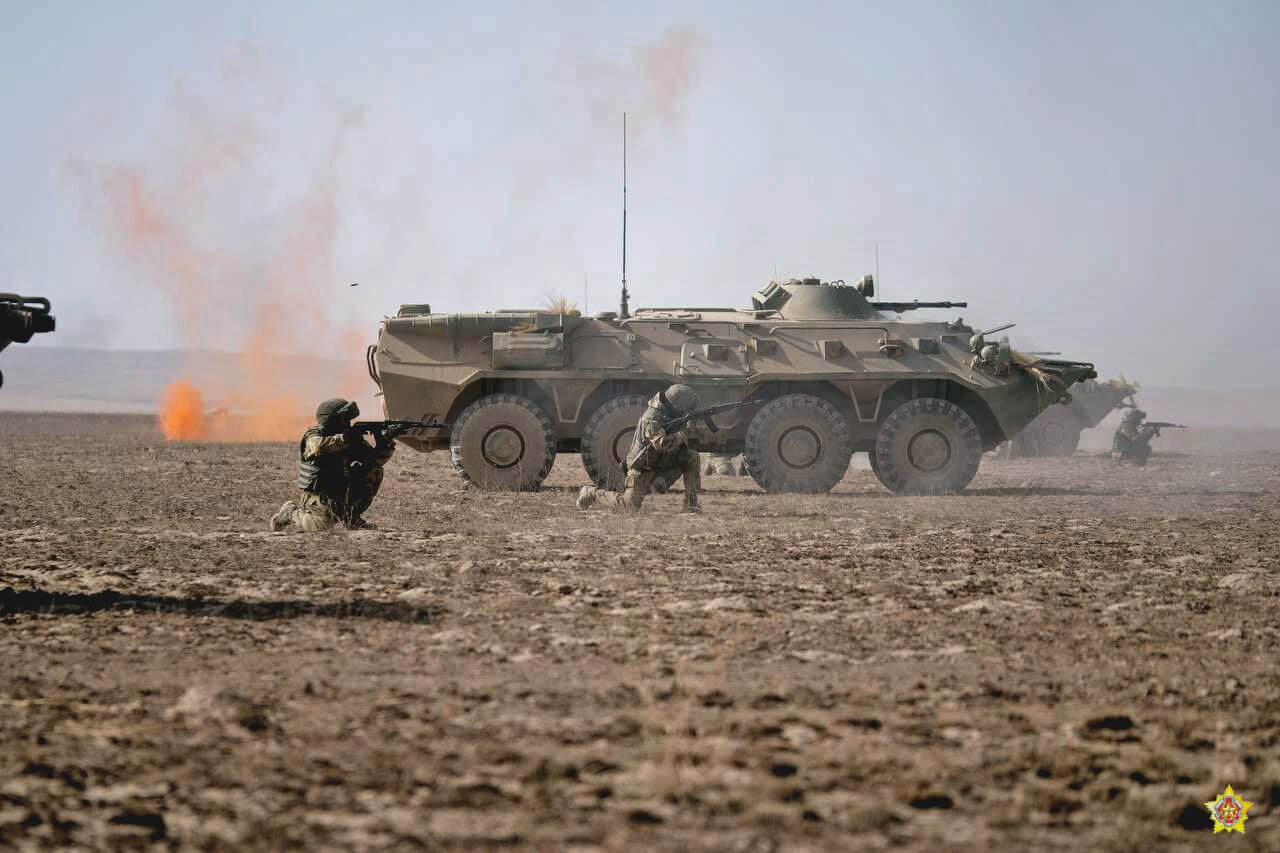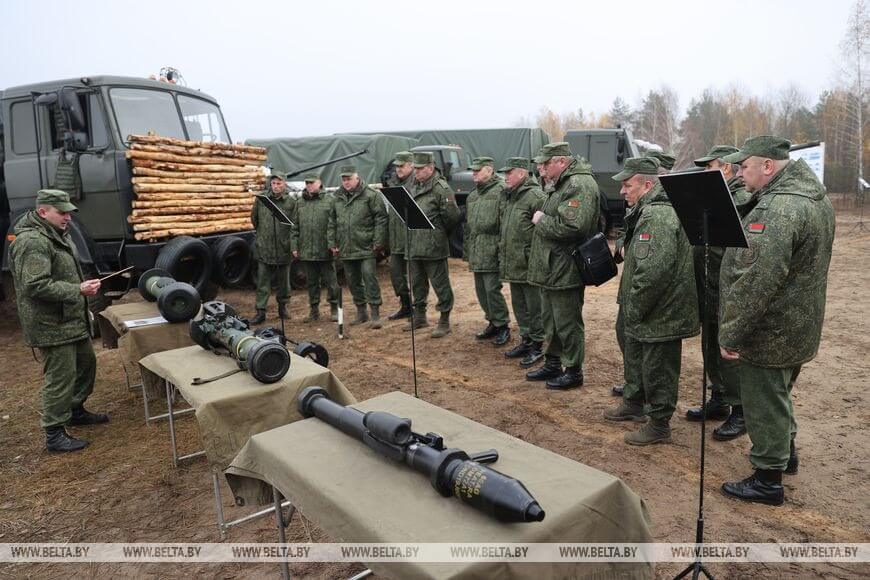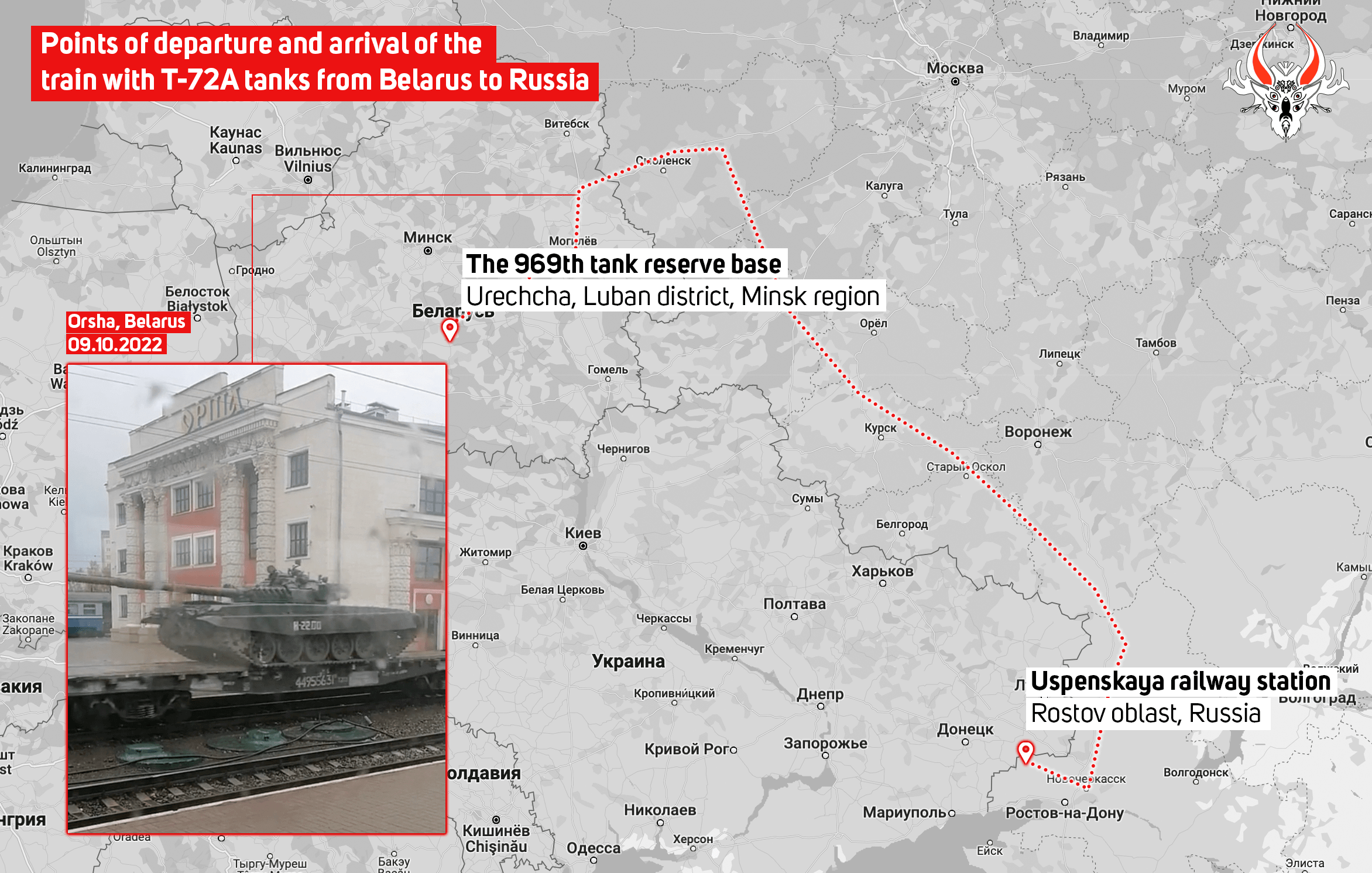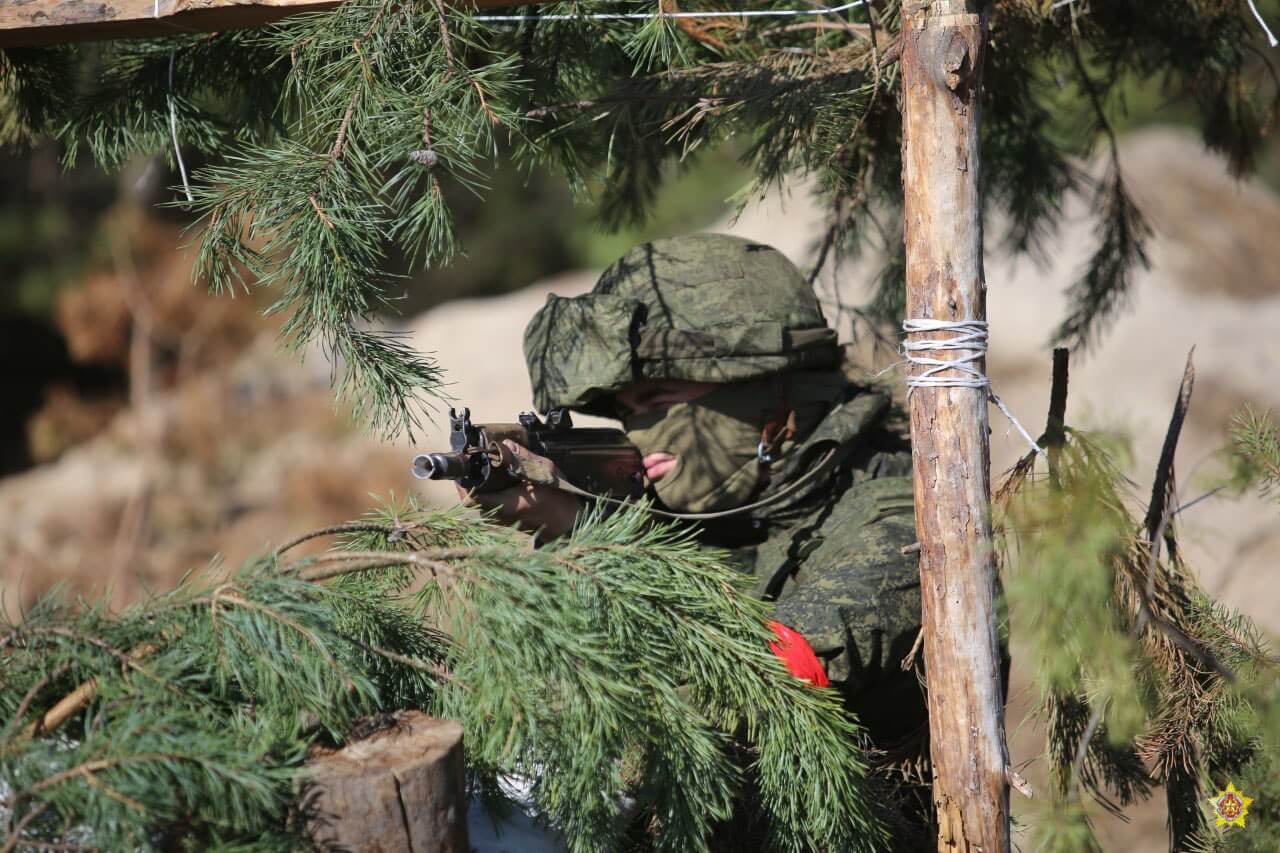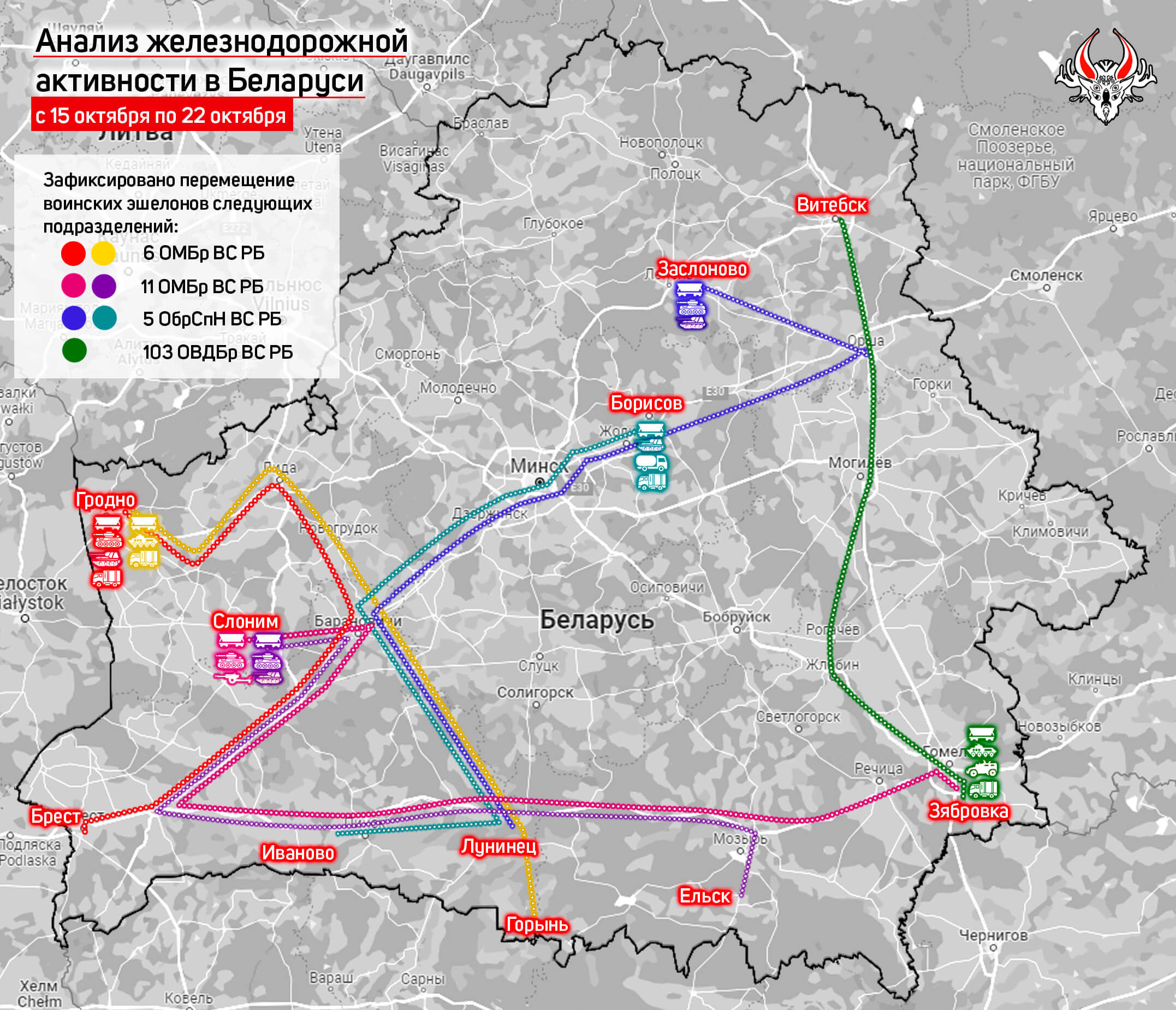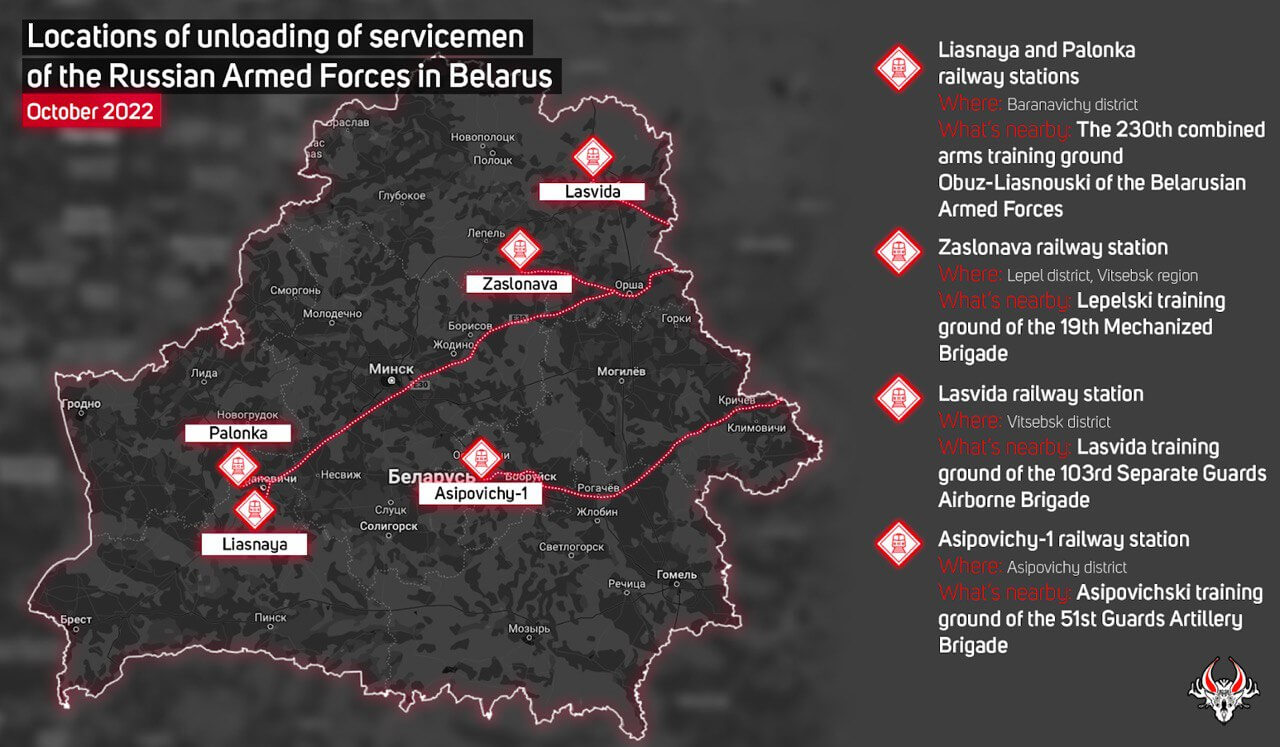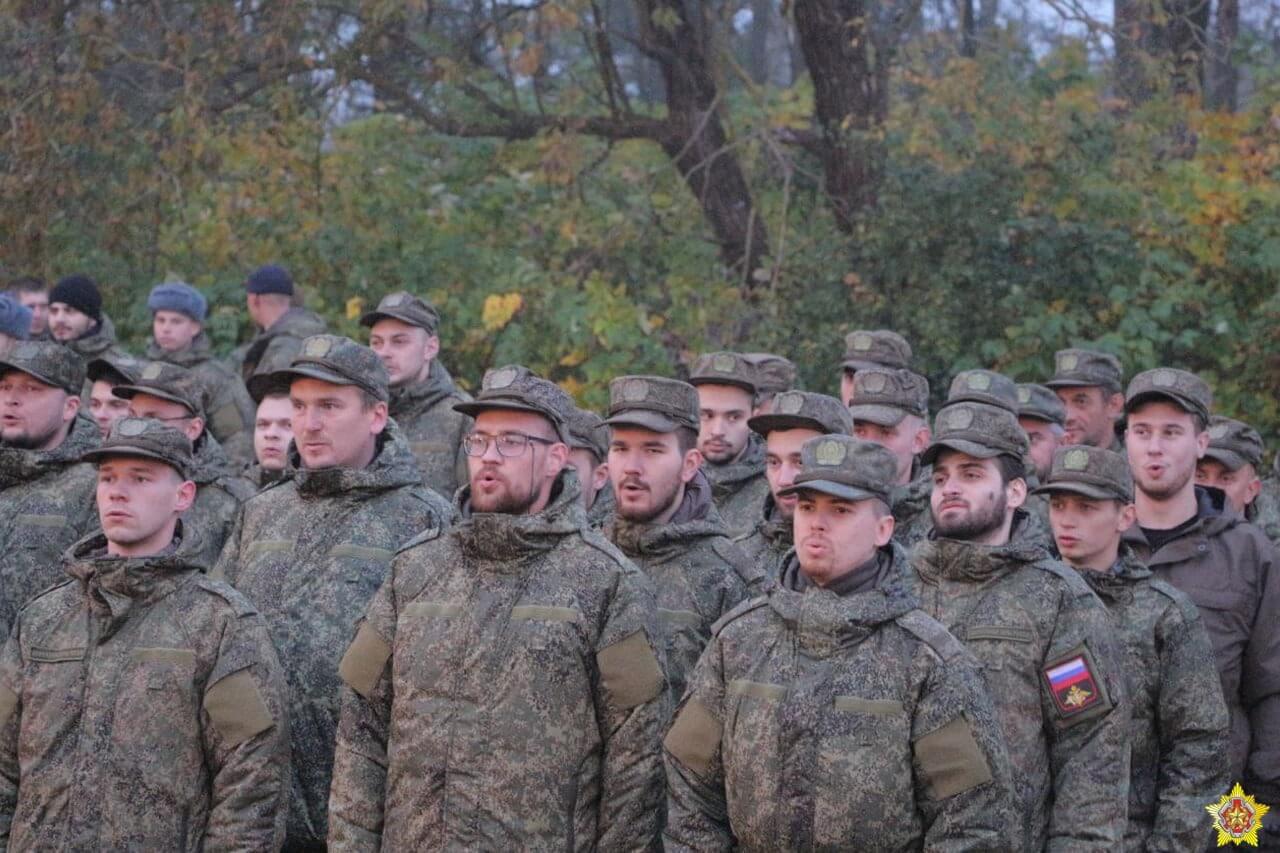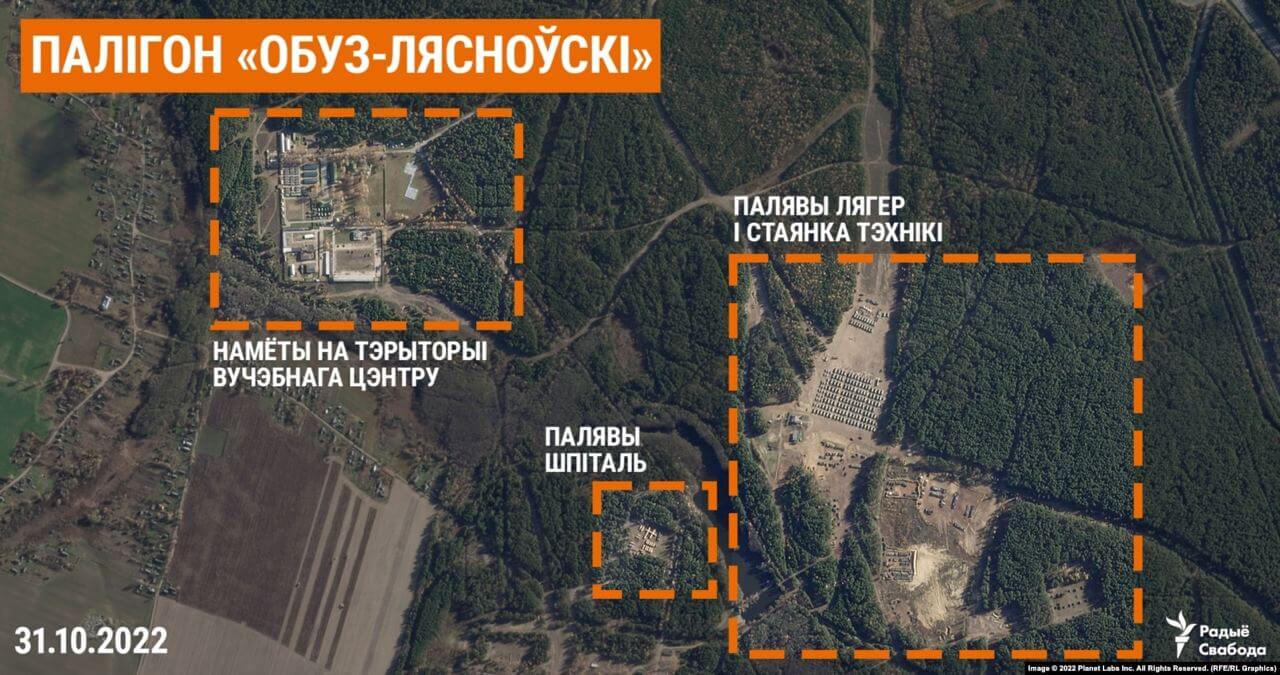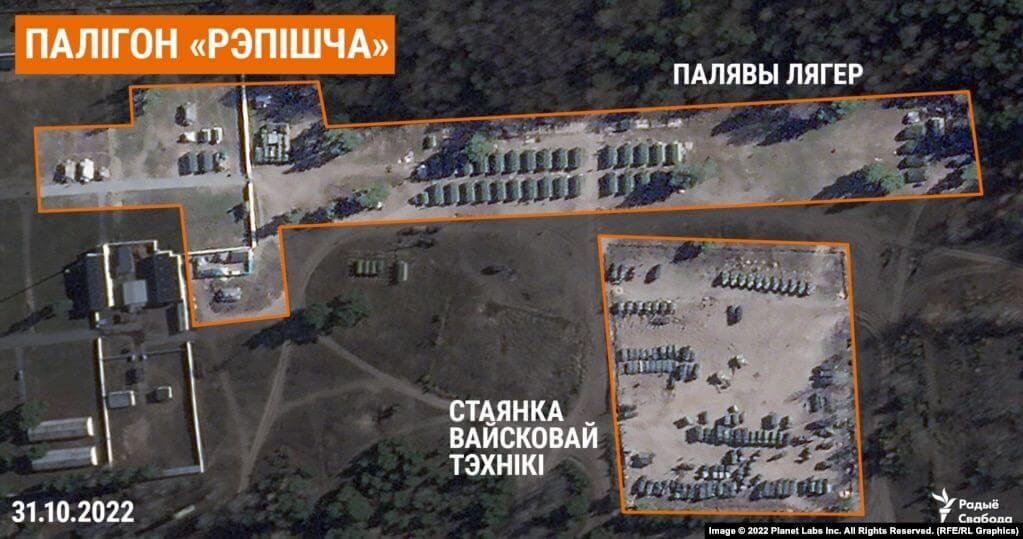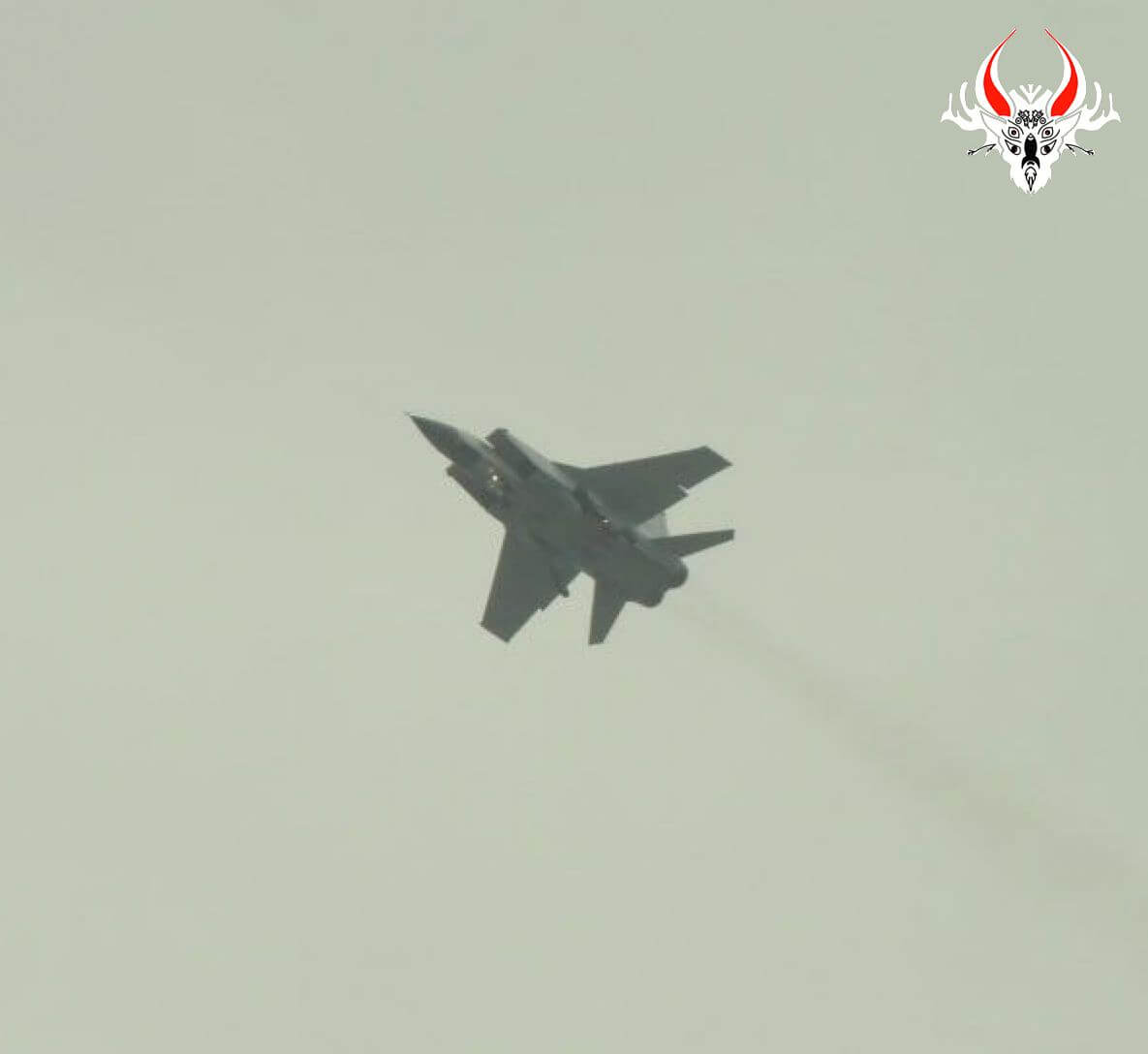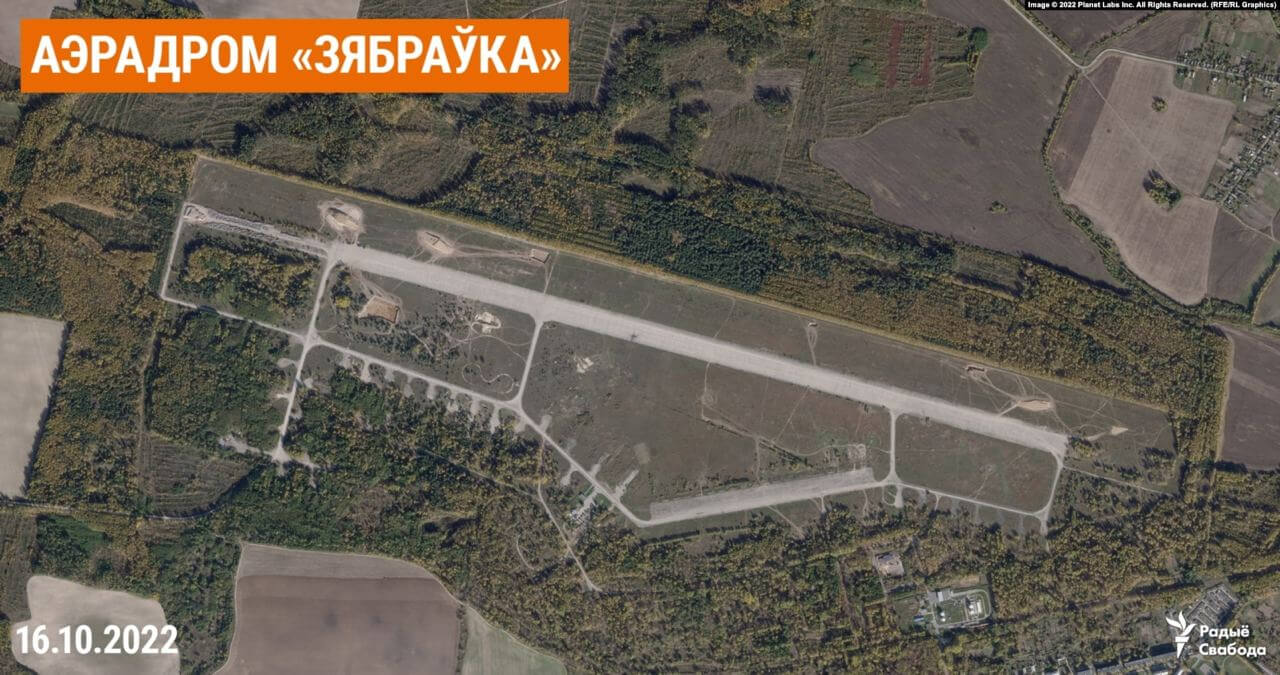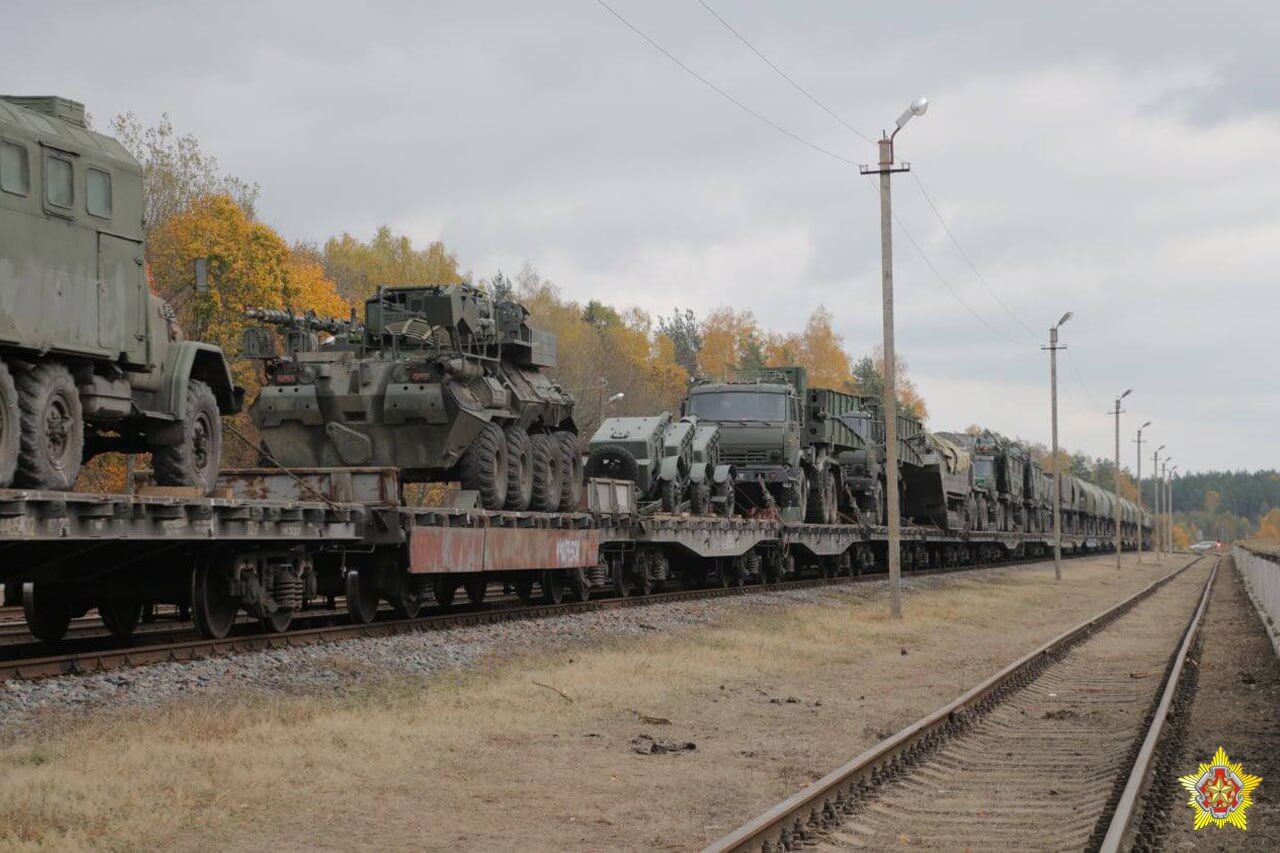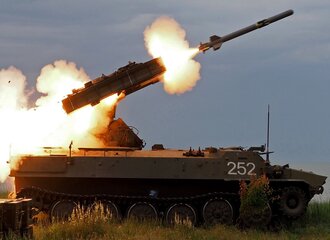На русском языке:
Развертывание региональной группировки войск, массовая сверка данных воинского учета, отправка оружия в РФ: обзор основных военных событий Беларуси за октябрь
In this review we will cover the most important military events that occurred on the territory of Belarus in October 2022. Information as of November 7, 2022
Conduct of exercises. Mobilization training of the Belarusian Armed Forces
Key points:
- Training sessions with conscripts drafted from the reserve continue to be held. There is no increase in the intensity of such events.
- Intensity of combat training events decreased in October due to the end of the academic year in the troops, as well as the transfer of some conscripts to the reserve.
- Verification of military registration data is being conducted massively in Belarus, and will officially continue until the end of 2022.
- Verification of military registration data can be interpreted as potential preparation for mobilization in the future. However, there are no signs of the beginning of real mobilization in Belarus as of today.
- The probable reason for the intensification of mobilization preparations may indeed be the lesson of the mobilization in Russia, supported by Lukashenka’s personal fears. This fear is justified by two factors: the harsh rhetoric of the official Kyiv about the retaliatory in case of a repeat of February 24, and the fear of the Belarusian military formations currently fighting on the side of Ukraine.
- A signal to Russia that the Lukashenka regime is also mobilizing for a possible participation in the war and will not allow Russia to be stabbed in its back can also be seen in the intensification of mobilization activities
Conduct of exercises
The number of combat training events conducted by the Belarusian Armed Forces decreased in October. Participation of the Belarusian military in three exercises on the territory of Kazakhstan from September 26 to October 13 was notable. These were:
- Exercise with the CSTO Collective Rapid Reaction Forces “Interaction-2022”;
- Exercise with the forces and means of reconnaissance “Search-2022”;
- Exercise with the forces and means of logistics “Echelon-2022”.
Exercise with the forces and means of reconnaissance “Search-2022” in Kazakhstan / Ministry of Defense of Belarus
At the same time, we should pay attention to the following activities:
- On October 11, a sudden inspection of the Belarusian Armed Forces was announced. Monitoring of Telegram channels of military units of the Belarusian Armed Forces showed that only units of the 339th Mechanized Battalion of the 120th Separate Mechanized Brigade (Minsk) went to the training ground to perform combat training tasks as part of the inspection. The inspection of the unit was held from October 11 to October 12 (1, 2, 3). Later it became known that units of the 6th Mechanized Brigade and the 38th Air Assault Brigade were also involved in the inspection. The total number of people involved in the inspection did not exceed 500 people and 50 units of military and special equipment.
- A tactical-special exercise conducted by the Ministry of Internal Affairs of Belarus. During the exercise, they trained search and destruction of possible sabotage-reconnaissance groups and illegal armed formations, as well as provision of security for citizens. The exercise took place in the town of Yelsk (Homel region).
- Field training with the personnel of the 432nd Main Military Clinical Medical Center of the Belarusian Armed Forces, which began on October 18.
There were no other large combat training events held by the Belarusian Armed Forces in October. This is explained by the end of the academic year in the troops (the new academic year will begin on December 1), as well as by the transfer of conscripts who have served their terms to the reserve (which, in turn, creates a shortage of the personnel in units).
We should also mention the operational training of the command staff of the Belarusian Armed Forces, which was held on October 26 at the Asipovichski training ground. The event was aimed at summarizing the experience of combat training of troops in the past academic year, as well as at planning tasks for the 2022/23 academic year in the troops. The main theme of the event was the war in Ukraine. The Belarusian military declare studying the experience of both the Russian Armed Forces and the Ukrainian Armed Forces and its implementation in the combat training of troops. It is notable that during the training, the military studied NLAW and Javelin anti-tank missile systems, as well as German Panzerfaust 3 shoulder-fired anti-tank grenade launcher. These weapons are used by the Ukrainian Armed Forces.
The Belarusian military were shown NLAW, Javelin and Panzerfaust 3 / BelTA
Conduct of training sessions with conscripts drafted from the reserve
Military training sessions continue to be held with conscripts drafted from the reserve. It was reported that such events were held at the 72nd joint training center, the 74th signal regiment, the 50th combined air base, the 250th guard and service battalion and the 5th special operations brigade. It was also reported about training sessions for people liable for military service, which will be held from October 21 to November 4 in the town of Maryina Horka.
The scale and intensity of these events allows us to state their planned nature. There is no increase in the activity of such training sessions.
Mobilization training
After the announcement of the so-called partial mobilization in Russia, rumors began to spread about a possible announcement of mobilization in Belarus. These rumors were supported by reports that citizens receive summonses from the enlistment offices, increase in the amount of various mobilization events, as well as inspections of bomb shelters. From all of the events mentioned above, it was logical to conclude that Belarus was preparing to enter the war between Belarus and Ukraine.
Officially, the Ministry of Defense of Belarus denied in any possible way the preparation and conduct of “covert mobilization” (1, 2, 3). On October 19, it became known that by Lukashenka’s order they must conduct verification of the military registration data all over Belarus. What would it look like? Citizens will be summoned to verify the data required for military registration at their place of work or study, as well as at their place of residence at local authorities and military commissariats. It is emphasized that the event is exclusively planned and should be completed by the end of 2022. It is noted that the specific feature of the verification events is the simultaneous summoning of a larger than usual number of persons liable for military service.
"Mobilization warrants" given to all men at a number of enterprises in Minsk region / motolkohelp
It was also reported that, for example, control notification of persons liable for military service and their attendance to verify the data of the military registration will be held from November 13 to December 30 in Minsk region. Military commissariats conduct inspections, as well as training on conduct of verification of military registration (1, 2).
It should be noted that on October 21, during a visit to the Obuz-Liasnouski training ground, Lukashenka said that the verification of military registration data was a lesson learned from the Russian mobilization, when military enlistment offices had irrelevant data, an inefficient notification system, etc. This statement may be called an official explanation of the verification of military registration data, because Lukashenka, speaking without a prepared speech, tends to “let slip” the true motives of his actions.
Transfer of heavy weapons and ammunition by the Lukashenka regime to Russia
Key points:
- The transfer of military equipment and ammunition indicates their shortage in Russia and is a new form of complicity of the Lukashenka regime in the aggression against Ukraine.
- The version about sending military equipment removed from storage for modernization to Russia is not credible at the moment.
- The Lukashenka regime does not plan to commit acts of aggression against Ukraine using the Belarusian Armed Forces due to the decrease in its own ammunition and weapons stock.
Back in summer 2022, there was information about the withdrawal of ammunition from the arsenals of the Belarusian Armed Forces to Russia. However, this process has reached a completely different scale in the past month. For example, on October 9, a video of an echelon with at least 12 T-72A tanks was published. The video was taken at Orsha station, and the echelon was moving towards Russia. As it became known later, these tanks were removed from storage of the 969th tank reserve base of the Belarusian Armed Forces (Luban district, Minsk region), and their loading was carried out at Urechcha station. Later, information about other echelons transporting military equipment to Russia was repeatedly received (1, 2, 3, 4, 5, 6, 7).
As of November 2, the quantity and nomenclature of military equipment transferred to Russia is as follows:
- at least 122 Т-72А tanks;
- from 36 to 44 Ural trucks;
- at least 20 infantry fighting vehicles BMP-2.
Military equipment is removed from storage and transferred to Russia from the following storage bases of the Belarusian Armed Forces:
- The 969th tank reserve base (Urechcha, Luban district, Minsk region): T-72A tanks and BMP-2 are removed from storage here.
- The 288th vehicle reserve base (Stariya Darohi, Minsk region): automotive vehicles are removed from storage here.
It should be noted that after the publication of information about the transfer of military equipment to Russia, the Ministry of Defense of Belarus made an official statement denying it. The official position of the Ministry is that military equipment is being withdrawn for subsequent modernization at the enterprises of the military-industrial complex of Russia. Propaganda resources of the Lukashenka regime actively spread the same version.
The points of departure and arrival of the echelon with T-72A tanks from Belarus to Russia, October 9, 2022 / Belarusian Hajun
The version about transfer of military equipment to Russia for modernization does not stand up to criticism for a number of reasons:
- A number of echelons with equipment move to the occupied territories of Donetsk and Luhansk oblasts of Ukraine. It is doubtful that military equipment can be modernized in the war zone.
- Nomenclature of transferred military equipment. For example, units of the Ministry of Defense of Belarus perform tasks on repair and modernization of vehicles (including Ural trucks) in the interests of the Belarusian Armed Forces. In this regard, there are doubts about sending old trucks to Russia for modernization.
- Earlier, the Ministry of Defense of Belarus purchased a batch of BTR-82A armored personnel carriers to equip mechanized brigades with them instead of BMP-2 infantry fighting vehicles. And the 140th Repair Plant offers a repair and modernization program for BMP-2. The situation with tanks is the same. Earlier, the Ministry of Defense of Belarus purchased T-72B3 tanks in Russia. And the 140th Repair Plant implemented a program of modernization of T-72B tank – T-72BM2. This brings up the question of the feasibility of sending equipment removed from storage for modernization to Russia.
- Some enterprises of the military-industrial complex in Russia shifted to around-the-clock work mode in order to meet the needs of the Russian Armed Forces in the production and repair of military equipment. Propaganda Telegram channels also report about this. This brings up questions about the technical ability of enterprises of the military-industrial complex of Russia to also meet the needs of the Belarusian Armed Forces in the modernization of military equipment.
The transportation of ammunition to Russia also continues. It became known that from March to September 2022, a total of 65,089 tons of ammunition (or 1,940 cars) were transported by rail from Belarus to Russia. It should be noted that part of the withdrawn ammunition belonged to the Russian Armed Forces. They were brought to the territory of Belarus before the start of Russia’s attack on Ukraine and remained after the Russian Armed Forces retreated from Kyiv oblast. Facts of ammunition shipments to Russia were also recorded in October.
Movements of military equipment of the Belarusian Armed Forces
Key points on paragraph 3:
- The nature of movements of columns with military and combat equipment does not allow us to make conclusions about the concentration of troops for the offensive against Ukraine.
- Recorded movements are explained by daily activities, as well as by planned exercises.
- The intensity of movement by rail is caused by the rotation of units performing the task of reinforcement of the state border protection. Three out of four brigades of the Belarusian Armed Forces were withdrawn from the border (the 6th and 11th Mechanized Brigades and the 5th Special Operations Brigade). It should be noted that similar rotation has been conducted before. Therefore, there are no elements of preparation for military aggression against Ukraine in the activities performed.
Movements of columns of military equipment
Movements of columns of military equipment are recorded due to combat training activities, the performance of tasks by units of the Belarusian Armed Forces to strengthen the protection of the state border, as well as the performance of daily activities.
A soldier of the Belarusian Armed Forces at the strengthening of the border / Ministry of Defense of Belarus
The highest activity of such movements was recorded in Brest and Homel regions bordering Ukraine, as well as in Minsk region. This is clearly visible on the interactive map of military activity. The following main routes of movements can be identified: Mikashevichy-Zhytkavichy, Stoubtsy-Baranavichy, Zhodzina-Barysau, Biahoml-Lepel, Asipovichy-Babruisk, Pinsk-Ivatsevichy, Stolin-Pinsk, Zhlobin-Homel, etc. Also, equipment was spotted in Homel, Zhytkavichy, Mazyr, Baranavichy, Minsk, Pinsk, Vitsebsk, Yelsk and the settlements of the Homel district. The columns mainly consisted of trucks of various purposes (MAZ, KamAZ, ZiL-131, Ural, GAZ-66), logistics equipment (field kitchens, fuel trucks, water carriers), communications and radio-electronic warfare equipment (for example, radio relay station R-414MBRP Sosna-2), medical service vehicles, as well as off-road vehicles (UAZ).
Movements of columns of combat equipment.
Movements of columns with combat equipment were also recorded. The highest activity of such movements was noted in Brest and Homel regions bordering Ukraine, and in Minsk region. For example, movements of columns of the Belarusian Armed Forces with combat equipment were recorded in the Homel district, Mazyr, Bykhau, Babruisk, as well as along the routes Brest-Makrany, Ivatsevichy-Stolin, Pinsk-Ivanava, Rechytsa-Kalinkavichy, Asipovichy-Zhlobin, etc.
BRDM Kaiman of the Belarusian Armed Forces / Ministry of Defense of Belarus
The columns included light armored vehicles (infantry fighting vehicles BMP-2, armored personnel carriers BTR-80/82A, BRDM-2 and Kaiman, armored vehicles of various modifications), artillery systems (220-mm Uragan MRL, 300-mm Smerch MRL, mortars of various modifications, etc.). There were also movements of equipment of the Air Defense Forces: S-300 SAM systems from the 15th anti-aircraft missile brigade from its permanent deployment point (Fanipal) towards Luninets, Strela-10 and Tunguska.
Movements of the Belarusian Armed Forces by rail
Due to the rotation of units to strengthen the protection of the state border, there were intensive movements of the Belarusian Armed Forces by rail. Movements of the following units of the Belarusian Armed Forces were recorded:
- Of the 6th Mechanized Brigade: from the Brestski training ground and from the village of Ziabrauka (Homel district) to its permanent deployment point (the city of Hrodna).
- Of the 11th Mechanized Brigade: from the towns of Yelsk and Lelchytsy to its permanent deployment point (the town of Slonim).
- Of the 5th Special Operations Brigade: from the town of Ivanava (Brest region) to Barysau; from the town of Luninets (Brest region) to the village of Zaslonava (Lepel district, Vitsebsk region).
- Of the 103rd Airborne Brigade: from Vitsebsk to Ziabrauka village (Homel district).
Analysis of the railroad activity on October 15-22 / Belarusian Hajun
Movements by rail were recorded from October 14 to October 22. The echelons with military equipment included standard armament of the relocated units: T-72B tanks, BMP-2 infantry fighting vehicles, BRM-1K combat reconnaissance vehicles, MT-LB tractor units, 122-mm self-propelled guns 2S1 Gvozdika, as well as armored personnel carriers (BTR-80/82A). It should be noted that the troops were rotated not only by rail, but also by public roads.
It should be noted that movements of units of the Belarusian Armed Forces by rail took place in conditions of taking unprecedented security measures by the Lukashenka security forces to protect railroad tracks, stations and artificial constructions during the movement of military echelons (1, 2). Such security measures had not been taken before.
Aviation activity of the Belarusian Air Force
There has been no increase in aviation activity of the Belarusian Air Force. During the past month, training flights at Machulishchy, Lida and Baranavichy military airfields of the Belarusian Armed Forces have been recorded during the month.
It should be noted that after the arrival of MiG-31K aircraft at Machulishchy airfield as an “aviation component of the regional group of troops,” joint flights with fighters that took off from Baranavichy military airfield were carried out. It is unknown whether Belarusian pilots took part in the joint flights.
Deployment of the regional group of troops
Key points:
- Analysis of available information allows us to identify the following purposes for the deployment of the regional group of troops in Belarus: 1) training of the mobilized citizens of Russia at the training grounds of the Belarusian Armed Forces due to the lack of infrastructure for the training of the mobilized in Russia. RGT performs the function of legal registration of new redeployment of the Russian Armed Forces to Belarus; 2) creation of additional tension on the borders of Belarus with Ukraine and EU/NATO countries.
- Mobilized and untrained citizens of Russia will not be able to be a striking force for an offensive operation or stop the NATO offensive in defense (as Belarusian propaganda believes). Accordingly, they will not be able to significantly strengthen the Belarusian Armed Forces to counter a hypothetical external enemy. This confirms the thesis that the new redeployment of the Russian Armed Forces to Belarus is not aimed at further military operation against Ukraine (with entrance from the territory of Belarus). There are no sufficient human and technical resources for this purpose.
Arrival of soldiers of the Russian Armed Forces in Belarus / Ministry of Defense of Belarus
- Redeployment of a new group of the Russian Armed Forces to Belarus for an indefinite period without a transparent and understandable procedure for its withdrawal subsequently poses a threat to the sovereignty and national security of Belarus.
- In fact, we are talking about the beginning of the third stage of the occupation of Belarus by Russia (first stage: 2020-beginning of 2022 (increase in the dependence of the Lukashenka regime on Russia in the military, political, economic and other spheres); second stage: February 20 — beginning of October 2022 (when after the end of the exercise Union Resolve -2022 Russian troops remained in Belarus and have not left its borders so far); formation of a system of military bases of the Russian Armed Forces in the southern regions of Belarus).
- In the future, the arrived contingent can be used to suppress protests against the Lukashenka regime, as well as serve as a force component for holding pseudo-referendums on the annexation of Belarus to Russia (following the example of the unrecognized LDNR, as well as the Russian-occupied Zaporizhzhia and Kherson oblasts of Ukraine).
Deployment of the RGT. Redeployment of troops
On October 10, during a meeting with the security forces, Lukashenka announced the deployment of the regional group of troops of Belarus and Russia (hereinafter – RGT) — “due to the aggravation on the western borders of the Union State.” We note that the creation of the RGT, which includes the entire Belarusian Armed Forces and some units of the Russian Armed Forces, is stipulated in Article 17 of the Treaty on creation of the Union State (Belarus and Russia) of 1999.
Officially, the RGT should include 170 tanks, up to 200 armored combat vehicles, up to 100 guns and mortars of caliber over 100 mm, and 9000 personnel of the Russian Armed Forces. In total, from October 15 to October 29, the monitoring group Belarusian Hajun recorded the arrival of at least 15 echelons of the Russian Armed Forces in Belarus.
At the moment, it is possible to identify the following stations for unloading of echelons:
Locations of unloading of military echelons of the Russian Armed Forces in Belarus / Belarusian Hajun
- Liasnaya and Palonka railway stations, Baranavichy district (the stations are located near the 230th combined arms training ground Obuz-Liasnouski of the Belarusian Armed Forces).
- Zaslonava railway station, Lepel district, Vitsebsk region (the station is located near the Lepelski training ground of the 19th Mechanized Brigade).
- Lasvida railway station, Vitsebsk district (the station is located near the Lasvida training ground of the 103rd Separate Guards Airborne Brigade).
- Asipovichy-1 railway station, Asipovichy district (the station is located near the Asipovichski training ground of the 51st Guards Artillery Brigade).
Thus, the Russian military are stationed at the training grounds of the Belarusian Armed Forces in northern and central Belarus, at a distance from the border with Ukraine. We are talking about the Lepelski training ground of the 19th Mechanized Brigade of the Belarusian Armed Forces (Lepel district, Vitsebsk region), Lasvida training ground of the 103rd Separate Guards Airborne Brigade (Vitsebsk district, Vitsebsk region), Asipovichski training ground of the 51st Guards Artillery Brigade (Asipovichy district) and the 230th combined arms training ground Obuz-Liasnouski of the Belarusian Armed Forces (near Baranavichy, Brest region). At the same time, VoenTV (TV and Radio Company of the Ministry of Defense of Belarus) reported that the arriving Russian military will be engaged in “planned combat training” in Belarus.
Arrival of soldiers of the Russian Armed Forces in Belarus / Ministry of Defense of Belarus
It should be noted that the first echelons with Russian servicemen arrived in Belarus without heavy armored vehicles, but with their own ammunition. Initially, only vehicles arrived with the Russian servicemen (to provide life support in the field). Appearance of servicemen, specific features of uniforms, non-statutory elements of clothing, etc. allow to state that mobilized citizens of Russia arrived in Belarus, not regular units of the Russian Armed Forces. At the same time, later, heavy weapons started to arrive in Belarus as well.
Analysis of the echelons of the Russian Armed Forces allows us to state that the following types of weapons were brought to Belarus (1, 2):
- Rocket artillery weapons: small number of Uragan and Grad MRL, 152-mm self-propelled howitzers 2S19 Msta-S, 152-mm towed howitzers Msta-B, 152-mm guns 2A36 Giatsint-B;
- Armored combat vehicles: a small number of T-72B3 tanks, BMP-2 infantry fighting vehicles, MT-LB tractor units, BTR-80 armored personnel carriers;
- Equipment of the engineering troops: 20 pontoon bridge parks (PMP) for guidance of pontoon crossing, armored recovery vehicle BREM-1, vehicle for excavation of pits MDK-3.
We may note that some of the equipment transported to Belarus is in poor condition. Some equipment is marked with “Z”, which indicates that it was in the combat zone. Some of the equipment looks old, but freshly painted, which may indicate the transportation of repaired equipment (including those previously damaged in battles in Ukraine).
We should also mention the arrival of three MiG-31K fighter-interceptors of the Russian Aerospace Forces at Machulishchy military airfield on October 16. For more details, see paragraph 2 “Activity of the Russian Aerospace Forces.”
Estimates of contingent of the Russian Armed Forces arriving in Belarus
On October 24, the Main Directorate of Intelligence of the Ministry of Defence of Ukraine estimated the number of Russian military personnel arriving in Belarus at 3200 people. According to our information, there were about 73 passenger cars in all of the arriving echelons. The capacity of a standard couchette car can be from 54 people (if sleeping berths are used) to 81 (if used as a regular car with sitting berths only). This allows us to assume that from 4000 to 6000 Russian servicemen could have already arrived in Belarus by rail only. At the same time, it is necessary to take into account that the military could also arrive by road transport via public roads.
Later, images of field camps located at the Belarusian training grounds appeared:
- The 230th combined arms training ground Obuz-Liasnouski (Baranavichy district): there is a field camp, a field hospital and a parking lot for equipment of the Russian Armed Forces (mostly with trucks). In total, there are about 190 tents and ≈200 trucks.
- Lasvida training ground of the 103rd Separate Guards Airborne Brigade (Vitsebsk district): there is a field camp with 100 tents, a parking lot for military equipment with 45 trucks.
- Asipovichski training ground of the 51st Guards Artillery Brigade (aka Repishcha) (Asipovichy district): there is a field camp with 40 tents and a parking lot for military equipment with about 100 vehicles.
A field camp and a parking lot for equipment of the Russian Armed Forces at the 230th combined arms training ground Obuz-Liasnouski / Radio Svaboda
The Russian Armed Forces have one of their main tents, the mobile living facility for extreme conditions MZhP type M-30. The capacity of the MZhP type M-30 tent is 30-32 people on bunk beds and 15-30 people on single tier beds (depending on the layout). The size of the tent is about 65 m². Dimensions of the tent: length – 10.0 m, width – 6.7 m.
The tent allows the installation of stoves for heating during the cold season and can withstand frost up to -50⁰C. Accordingly, the tent is designed for year-round accommodation of personnel.
Judging by the data from satellite images, as well as photos from open sources, in this case we are talking about a tent of MZhP type M-30 (or its analogue). Taking into account that in order to accommodate personnel for more than 3 days, tents are equipped with places to store outerwear, kettles (other tableware), duffel bags, toiletries and personal items, we may assume that the following number of servicemen of the Russian Armed Forces is concentrated at the training grounds of the Belarusian Armed Forces:
- The 230th combined arms training ground Obuz-Liasnouski (Baranavichy district): 5700 (190 tents / 30).
- Lasvida training ground of the 103rd Separate Guards Airborne Brigade (Vitsebsk district): 3000 (100 tents / 30).
- Asipovichski training ground of the 51st Guards Artillery Brigade (aka Repishcha) (Asipovichy district): 1200 (40 tents / 30).
- In total at three training grounds: about 9900 servicemen.
A field camp and a parking lot for equipment of the Russian Armed Forces at the Asipovichski training ground (aka Repishcha) / Radio Svaboda
This figure should not be taken as final. In this case we should also make a remark that not all of the tents visible on the satellite images can be used to accommodate personnel. In addition to the actual accommodation of the personnel, the tents can be used for:
- organizing catering in the field (deployment of canteens for soldiers and officers, household provision point);
- deployment of the staff;
- deployment of leisure room;
- deployment of bathhouse;
- deployment of medical office;
- auxiliary needs (for accommodation of equipment, warehouses, workshops, power units and other facilities in the field, as well as for work and household needs), etc.
In this regard, the figure of 9900 servicemen of the Russian Armed Forces who may be stationed at the three training grounds of the Belarusian Armed Forces should be clarified and reduced. In this case, it can be assumed that a total of 7500-8000 servicemen of the Russian Armed Forces may be stationed at the training grounds of the Belarusian Armed Forces. This estimate correlates with the estimate of the number of Russian servicemen (from 4000 to 6000) arriving in Belarus by rail (see above).
We note that this estimate (7500-8000 servicemen of the Russian Armed Forces) does not include the flight and technical personnel who are stationed at Machulishchy airfield together with MiG-31K fighter-interceptors of the Russian Aerospace Forces.
Activity of the Russian Aerospace Forces
Key points:
- Military-transport aviation of the Russian Aerospace Forces continues to arrive in Belarus, which is primarily explained by the supply of the group of troops deployed in Belarus.
- It is also possible that some part of the Russian contingent of the regional group of troops (for example, officers) could have been transported to Belarus by aircraft.
- The greatest threat to Ukraine is the redeployment of MiG-31K aircraft to Belarus, which can use hypersonic Kinzhal missiles.
Three MiG-31K fighter-interceptors of the Russian Aerospace Forces arrived at Machulishchy military airfield as part of the deployment of the RGT in Belarus. The Ministry of Defense of Belarus reported that the aircraft are an “aviation component” of the RGT.
MiG-31K of the Russian Aerospace Forces over Minsk on October 16, 2022 / Belarusian Hajun
It should be noted that MiG-31K aircraft can carry hypersonic Kh-47M2 Kinzhal missiles. There is information that these missiles may be located at Machulishchy airfield (1, 2). Takeoffs and training of these aircraft for “patrolling the borders of the Union State” have already been noted (1, 2, 3).
Three MiG-31K of the Russian Aerospace Forces at Machulishchy airfield / Planet
In October, military-transport aircraft of the Russian Aerospace Forces arrived at:
- Baranavichy airfield: military-transport An-26 aircraft;
- Machulishchy airfield: transport An-72 aircraft, passenger Tu-134 aircraft and three An-148 aircraft, military-transport An-12 and three IL-76;
- Homel airport: 3 military-transport IL-76.
Missile strikes from the territory of Belarus
Key points:
- There is a decrease in the number of missile strikes from the territory of Belarus against Ukraine.
- Intensification of strikes on Ukrainian civilian infrastructure by Russia allows us to state that missile strikes from the territory of Belarus may continue in the future.
- Taking into account the redeployment of MiG-31K, which can use hypersonic Kinzhal missiles (see paragraph 2), to Belarus, we may assume that missile strikes will also be launched using the mentioned weapons.
Missile strikes from the territory of Belarus
Single missile attacks against Ukraine from the territory of Belarus continued. For example, according to the Ukrainian Armed Forces, on October 6, four Tu-22M3 aircraft of the Russian Aerospace Forces launched an air strike against the territory of Khmelnytsky oblast of Ukraine from the airspace of Belarus.
No other missile strikes from the territory of Belarus were recorded in October. We note that before the attack on October 6, the last missile strike from the territory of Belarus was launched on August 28. Thus, we can state a decrease in the intensity of missile strikes from the territory of Belarus against Ukraine.
Use of Shahed-136 kamikaze drones from the territory of Belarus
During the month, a lot of information was spread about launches of Shahed-136 kamikaze drones from the territory of Belarus by the Russian Armed Forces. Part of the information was blatantly fake. It should also be noted that representatives of the Pentagon (U.S. Department of Defense) denied information about Iranian instructors training the Russian military to use kamikaze drones in Belarus
Shahed-136 kamikaze drone / AFP
It should be noted that during October, flights of autogyros, which patrolled the state border of Belarus, were observed in the southern regions of Belarus (1, 2, 3, 4). Due to some similarity in the sound of kamikaze drones and autogyro, we may assume that Shahed-136 drones were mistaken for autogyros. However, we do not have any proof for this theory.
At the moment, the monitoring group Belarusian Hajun has no confirmation that kamikaze drones were brought to Belarus and launched from the territory of the country to attack Ukraine. At the same time, we assumed that the launches could be made from the Belarusian part of the Chernobyl zone.
Movements of military equipment of the Russian Armed Forces
Key points:
- Movements of military equipment of the Russian Armed Forces were caused mainly by supplying the group of troops of the Russian Armed Forces stationed earlier and by the contingent arriving for the deployment of the regional group of troops.
- Lack of mass movement of equipment of the Russian Armed Forces in the southern regions of Belarus is an indirect confirmation that the Russian Armed Forces are not currently preparing the offensive against Ukraine from the territory of Belarus.
- We can state an increase in the intensity of movement of vehicles of the Russian Armed Forces for the reasons mentioned above.
There are single movements of equipment in the southern regions of Belarus. For example, equipment of the Russian Armed Forces was spotted in the Kletsk district of Minsk region, Homel district of Homel region, in Dobrush, Yelsk, Homel, Kletsk, Mazyr, Bykhau, Asipovichy, Lepel, Rechytsa, etc. Mainly trucks of the Russian Armed Forces were recorded. Insignificant movements of columns of combat equipment were also noted (1, 2).
Arrangement of established military bases of the Russian Armed Forces
Key points:
- The Russian Armed Forces continue to develop their military facilities in the southern regions of Belarus.
- There is currently no evidence of the increase in this activity.
At Ziabrauka airfield (Homel district). According to the available satellite images, we can conclude that new sand mounds have been created, as well as an increase in the number of equipment of the Belarusian Armed Forces can be seen. Thus, at least three fresh sand mounds can be seen at the airfield (sand for them is taken from quarries made right on the territory of the airfield). Such mounds are used to deploy Pantsir SAM systems. Various radars can also be placed on the mounds.
Satellite image of Ziabrauka airfield on October 16, 2022 / Radio Svaboda
Also, at the airfield:
- the number of military trucks has increased, and the military camp has expanded;
- there was a train with fuel.
No new information about the deployment of the Russian military at Luninets airfield (Brest region) and the airfield in the village of Vialiki Bokau (Mazyr district) was received in October. All the available information about Russian military activity at the mentioned facilities can be found via the following link.
Summary conclusions
1) Russia continues to increase its military presence in Belarus. Deployment of the regional group of troops led to a significant increase of the Russian military presence in Belarus.
If we talk about the prospects for the presence of the Russian contingent of the RGT in Belarus, then we should pay attention to the following.
Officially, the Russian authorities stated that the training period for mobilized citizens of Russia could be up to one month. In other words, for the military who have arrived (and continue to arrive) in Belarus, this period may end by the end of November or the beginning of December. In this case, we should take into account the time needed to deploy the field camp and to equip it (in this case, some personnel may not be involved in combat training activities).
Most likely, the end of military training and combat coordination of the Russian military at the training grounds of the Belarusian Armed Forces will be at the beginning of the calendar winter. According to estimates of experts, due to the start of cold weather, the intensity of combat operations in Ukraine may be reduced, but not stopped completely. In other words, the Russian military will be trained at the training grounds in Belarus by the time combat operations in Ukraine will be temporarily complicated due to the beginning of winter and cold weather. We note that the Russian Armed Forces are currently making any attempts to break the defense line of the Ukrainian Armed Forces before winter comes.
Equipment of the Russian Armed Forces that arrived in Belarus / Ministry of Defense of Belarus
It should be noted that most of the military equipment, with which the Russian Armed Forces arrive in Belarus, is vehicles. We also note the transportation of artillery, armored combat vehicles and other military equipment. According to our estimates, a total of 7500-8000 Russian military personnel may be stationed on the territory of Belarus, who arrived after the announcement of the deployment of the regional group of troops.
This allows us to make the following conclusions:
- Taking into account that the Russian Armed Forces are redeploying the mobilized Russian citizens to Belarus, the hypothesis suggested a month ago (about the training of the mobilized from Russia in Belarus) is confirmed.
- The mobilized from Russia, having been trained at the training grounds of the Belarusian Armed Forces, may not have time to take part in the ongoing attempts of the Russian Armed Forces to perform offensive operations. In this regard, we may put forward a hypothesis that the mobilized from Russia will be able to go to fight in Ukraine no earlier than late winter or early spring 2023. At the same time, we should recall that after the retreat of the Russian Armed Forces from Kyiv oblast in March-April 2022, a system of Russian military bases was formed in the southern regions of Belarus, which are still functioning today. This applies primarily to Ziabrauka, Luninets airfields and the airfield in Vialiki Bokau. Officially, the presence of the Russian military at the mentioned facilities is not declared. In other words, the status of these military facilities, what activities they are authorized to conduct in Belarus, etc., is not clear. As practice shows, such facilities can exist for a long time without any legal registration. For example, this is what happened to the joint combat training centers, which were created approximately back in August 2021, but the international agreement on their functioning is currently at the stage of negotiation.
Developing the hypothesis that the Russian military can stay at the training grounds of the Belarusian Armed Forces for an indefinite period, we may assume the following options for the use of the Russian Armed Forces contingent from the regional group of troops:
- The Russian military will stay in Belarus until the end of winter/early spring 2023, after which they will go to participate in combat operations in Ukraine. While in Belarus, they will be engaged in combat training, as well as actively ill (due to difficulties in ensuring normal living conditions in the field).
- The Russian military will stay in Belarus until the end of winter/early spring 2023 to conduct a new offensive operation (February 24 2.0). We note that at the moment this scenario should be considered as unrealistic. The preparation of the Russian Armed Forces for a new offensive operation against Ukraine can’t be unnoticed. We should not forget that the invasion on February 24 from the territory of Belarus was relatively “successful” also due to its unexpectedness for the Ukrainian leadership. As of today, the northern border is equipped in engineering terms to deter the offensive. This makes an offensive from Belarus even more difficult.
- The Russian military will be permanently stationed in Belarus as a distraction for Ukraine, which will be forced to concentrate combat-ready units in the northern direction, leaving other parts of the front.
2) Despite the activity of the Belarusian Armed Forces (mass verification of military registration data, exercises, rotation of troops on the border, etc.), there are currently no convincing facts, based on which we can conclude that the Belarusian Armed Forces are preparing to participate in combat operations in Ukraine (to carry out offensive operations against Ukraine). It should be noted that a number of activities carried out by the Ministry of Defense of Belarus were caused, among other things, by the negative experience of Russia (for example, when conducting mobilization).
In turn, the Belarusian propaganda is escalating the situation. It would be appropriate to recall the statements about numerous provocations from the Ukrainian side, the alleged capture of spies working for the Ukrainian intelligence service, etc. At the same time, it is officially stated that roads are mined and bridges are blown up by Ukraine. Such actions indicate only preparations for the defense, but not the offensive.
